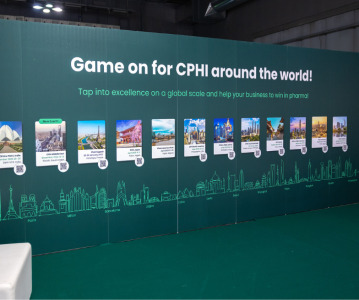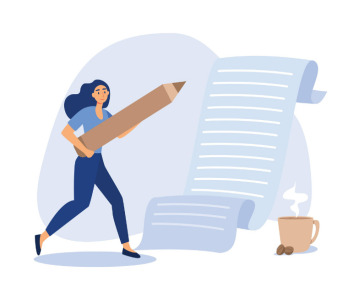Women in Pharma: Empowering yourself and other women in pharma
.png)
In our new monthly series, we interview women from across the pharmaceutical industry and supply chain to discuss the importance of gender diversity in healthcare, the workplace, and beyond.
In this month’s instalment, we catch up with Namrata Gill, VP Human Resources at Dr. Reddy’s Laboratories, on how women in the pharmaceutical industry and related organisations can empower themselves and the women around them within the workplace. Whether it be addressing flexible working patterns, championing women leaders, or increasing resources for women in manufacturing lines, Gill takes us through how organisations can better impact the lives of the women in their workforce.
1. Can you please introduce yourself and your role at Dr. Reddy’s Laboratories?
My name is Namrata and I’ve spent almost 10 years at Dr. Reddy’s. Currently, I’m the Head of HR for our API business, plus the services businesses that we have (CDMOs and CROs). I also head all COE’s, which means Centre of Excellence, for HR. One of the centres of excellence that I head globally for HR is about diversity and inclusivity.
2. How do you champion gender diversity in the workplace through your role?
For us, diversity goes beyond gender, though it is a major part of it. We also talk about people with disabilities and transgender communities in the organisation. But for this purpose, I will focus on gender diversity. The first thing we did was we set long-term goals for ourselves. We started doing this almost 10 years back when a lot of organisations weren’t even talking about it. We are the only Indian company listed for 6 years on the Bloomberg Gender Parity Index. We have gone beyond numbers – we are talking of development, about the ecosystem, and we have been certified internally by Bloomberg on our gender diversity measures. We are still seeking more accreditations or certifications on pay parity. I focus on it in four ways. The first way is, of course, hiring enough women. The second is considering what kind of experiences we are giving women. The third is how are we developing women in our workforce and the fourth is about leadership. It is not just about going out and hiring more women – it's about considering all the aspects of helping the women we do hire. For example, can we go to villages and hire underprivileged women and educate them to join and help us? How much flexibility can we give them? We also look at alternate population groups of women, for example, those coming back from a long career break. How do we bring them back to the mainstream?
The majority of our workforce In India is in manufacturing plants. Women in night shifts were unheard of previously, so what kind of experience can we give these women working night shifts? We conduct in-depth interviews with these women to understand how they can feel safe while going to work at night, what kind of food they must prepare, and build a whole ecosystem where we try to help women. We were also careful that we worked in an inclusive manner. Cultivating men as allies and making everyone feel welcome and included is the objective – it's about equality after all. We worked around and created a group of men and their managers and peers as allies to help women succeed.
3. How can pharmaceutical organisations or companies implement gender-diverse mindsets like those at Dr. Reddy’s into their work environment, and what challenges might they face in doing so?
There’s two parts to this. The first is that, while there’s a lot of potential for innovation in pharma companies, we require the right environment for this innovation to be created and the right ecosystem for people in pharma. For example, until recently we did not have a female leader in the API business. Most of the frontline leaders were men. Our services business recently brought out a woman leader as the Head of a CRO business and we are looking to induct another woman leader. The point is that pharma requires a lot of agility and flexibility. Pharma is a dynamic industry and first and foremost it requires a lot of innovation. When women are present, the quality of thought processes, ideas, and innovation significantly improves. The more important thing is to create the right environment for your team. When you hire women, you have to make sure you retain them through the experiences you give them. A breastfeeding mother might need to take her child to the workplace, where she may need to feed the child. There’s no one-size-fits-all solution – you have to go deeper and understand the problems. Employee studies really help you to understand what is missing on the surface. E.g. we found out that the chair we provided for nursing mothers was not comfortable enough to balance a child in a specific position to feed.
4. What programmes are there currently for women to empower themselves and what specific programmes does Dr. Reddy’s have as an API manufacturer?
We have three significant programmes.
The first is something we are just about to launch - a women leaders programme. We are hiring 100 future women leaders. While we may not have enough roles yet, these 100 women will undergo development and training to potentially take up leadership roles through internal and external hiring.
Another global programme is called Chrysalis, which is about developing women leaders from middle to senior management. It is a global talent programme spread over 12 months to help us develop women in leadership roles.
The third thing we are doing is increasing entry-level hiring of women. In sales and manufacturing in R&D, we are mandating the majority of hiring be women. In business units that have fewer women, we work with the business leaders to hire women. The talent management team continuously works with the right partners to look for women candidates who would be the right talent fit. Even if we don’t have any vacancies, we keep a pool of employable women. So with a little bit of proactive effort, we have been able to hire more women.
5. Are there any specific challenges that pharmaceutical manufacturing organisations face when it comes to gender diversity and inclusivity? How do you overcome these challenges?
Manufacturing has been a primarily male-dominated society. Women have been at home taking care of their family. For these companies, it’s a mindset shift to get women to work. This required a lot of sensitivity training and unconscious bias awareness training for hiring. We almost had to mandate an equal number of CVs from women. We had a lot of processes and systems in place when hiring to empower women. So, the biggest challenge we faced was about the mindset.
The second biggest challenge is the availability of senior women in manufacturing. Traditionally, if I wanted a woman in the manufacturing plant, they would only be workers. There’s a very small talent pool available. So what we did was we hired a lot of women in middle management, put them on the bench, and got them ready to take over manufacturing leadership over 18 months. That has helped us employ more women in the manufacturing plants.
6. What advice would you give to these companies trying to implement similar initiatives or programmes for empowering women?
The first piece of advice is it is not a one-size-fits-all solution, you need to go deeper. The second advice is about the experiences that you are giving to your existing workforce, which will help you hire and retain women. The third is looking at what kind of women are staying and why some women are leaving the company with in-depth exit studies. The fourth is looking for alternate talent pools of women like those coming from long career breaks.
7. Who are some of your Heroines of Pharma?
I look up to the women who have made the longest journey coming to work. We had a lot of very junior women who worked throughout COVID-19, at the risk of their own health and the health of their families. During COVID-19, pharma was one of the industries that worked non-stop, and these women had to travel, leave their children, and come to work and help us manufacture treatments. For me, they are the biggest heroes. I think there are a lot of everyday heroines in pharma but – I know we tend to idealise very senior women who have made it to the top – there are a million others who have also been working. We had a lot of women working to drive the vaccination effort so for me, they’ll always remain the women I look up to.
Interested in how we're championing gender diversity and equality in the pharmaceutical industry? Catch-up on all instalments of our Women in Pharma series here.
Related News
-
News A Day in the Life of Oncology Start-Up Co-Founder & CEO
This Women's month we are highlighting stories of women in the pharma industry (building on what we do every month to support women), so for the Day in the Life of we are speaking to Sharon Cunningham who is the Co-founder and CEO of Shorla On... -
News Women in Pharma: Manufacturing personal and team success
Our monthly Women in Pharma series highlights the influential lives and works of impactful women working across the pharmaceutical industry, and how the industry can work towards making the healthcare industry and workplace more equitable and inclusive... -
News Women in Pharma: Connecting accessible pharma packaging to patients – a Pharmapack Special
Throughout our Women in Pharma series, we aim to highlight how CPHI events encourage discussions around diversity, equity, and inclusion initiatives in the pharmaceutical industry. -
News Women in Pharma: Delivering on global access to medicines
Our monthly Women in Pharma series highlights the influential lives and works of impactful women working across the pharmaceutical industry, and how the industry can work towards making the healthcare industry and workplace more equitable and inclusive... -
News Women in Pharma: Our hopes for 2025 and beyond
Our last instalment for 2024 of the Women in Pharma series brings you messages direct from the Informa Markets CPHI team as they discuss the advice and insights they have carried throughout their roles working at CPHI, and what they hope to see for the... -
News Closing 2024 with Editors' picks of top articles from the past year
Coming to the end of 2024 and it’s certainly been a busy year, for CPHI and for the rest of the pharmaceutical and healthcare industry. Topics of conversation throughout the last 12 months have been varied, touching on the technical, to the polit... -
News Day in the Life of a Green Chief Financial Officer
Our latest look into the daily lives of the people behind the pharma community brings us to meet Juan Jose Piedra Galan, Global Financial Planning & Analysis Manager for Galderma, otherwise known as 'The Green CFO'. -
News Women in Pharma: Reflections from Behind the Scenes
In this instalment of our monthly series, the team that brings you the Women in Pharma series each month sits down for a heart-to-heart on what the series means to them, and how they hope to continue their work in the future.
Recently Visited
Position your company at the heart of the global Pharma industry with a CPHI Online membership
-
Your products and solutions visible to thousands of visitors within the largest Pharma marketplace
-
Generate high-quality, engaged leads for your business, all year round
-
Promote your business as the industry’s thought-leader by hosting your reports, brochures and videos within your profile
-
Your company’s profile boosted at all participating CPHI events
-
An easy-to-use platform with a detailed dashboard showing your leads and performance


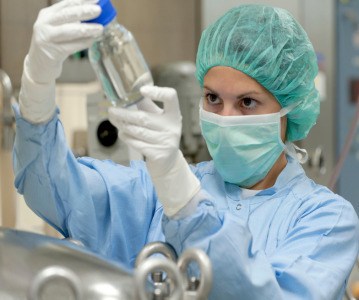
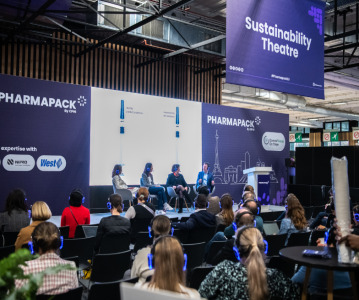
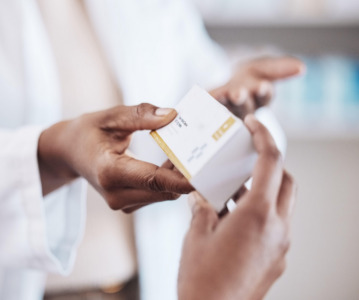
.png)
